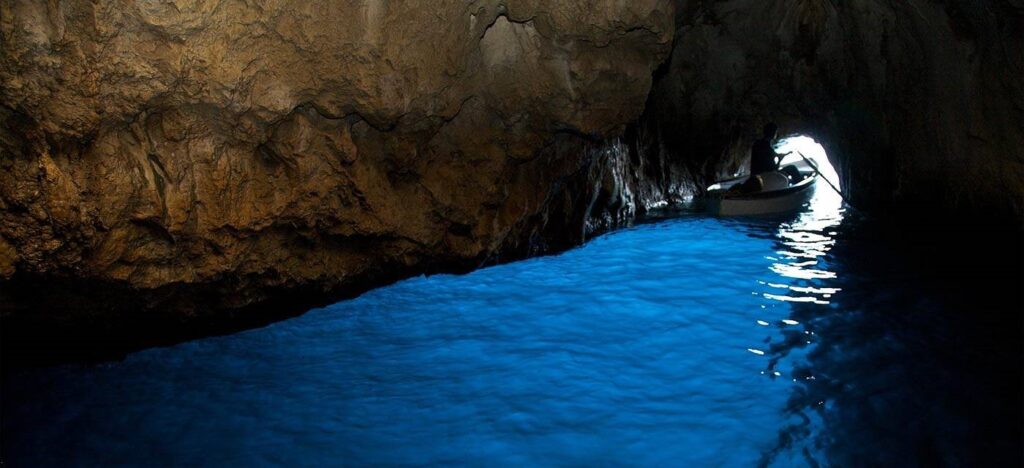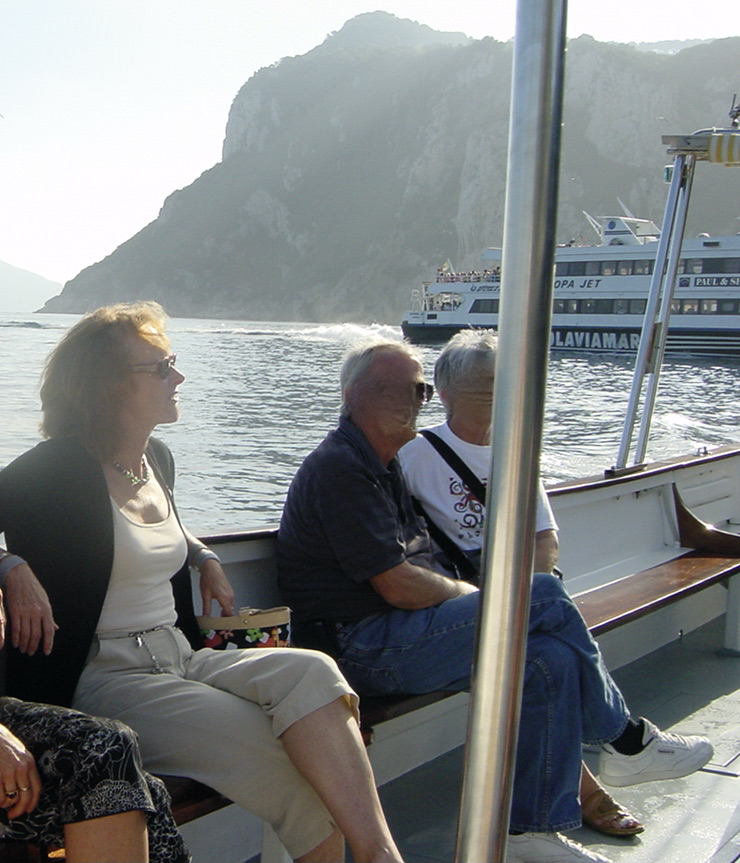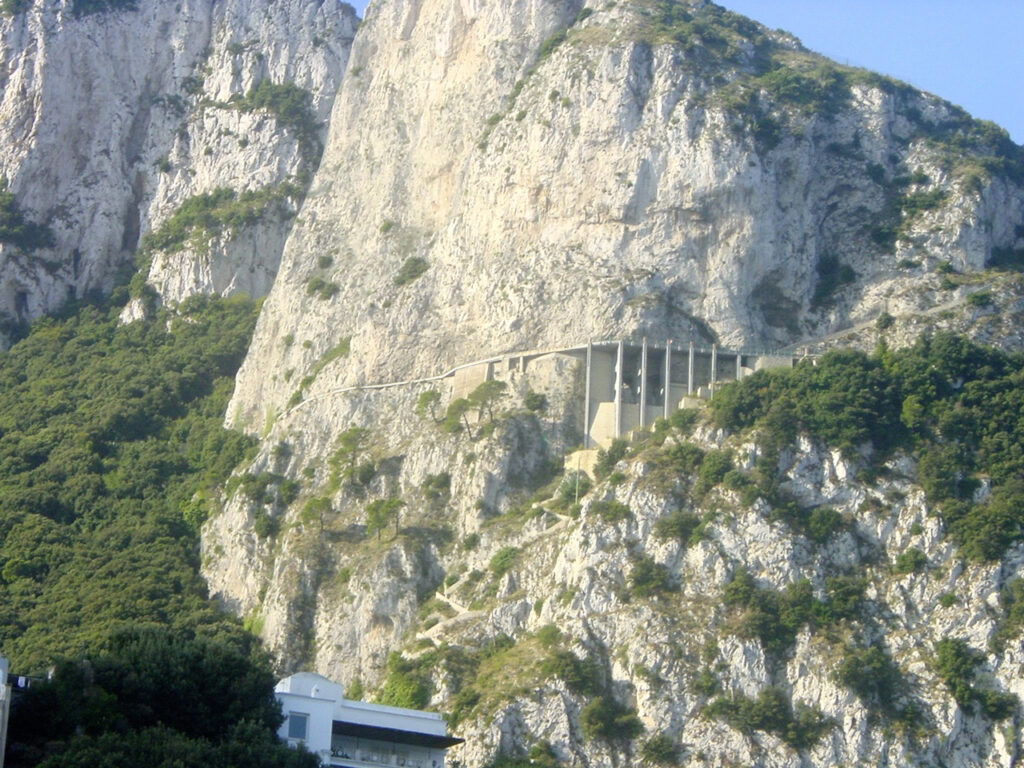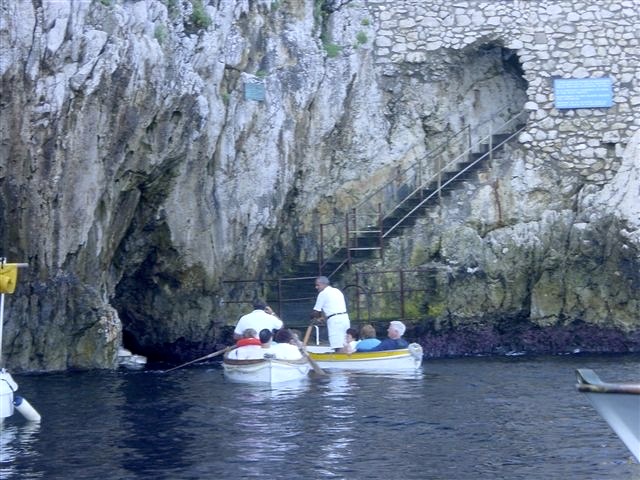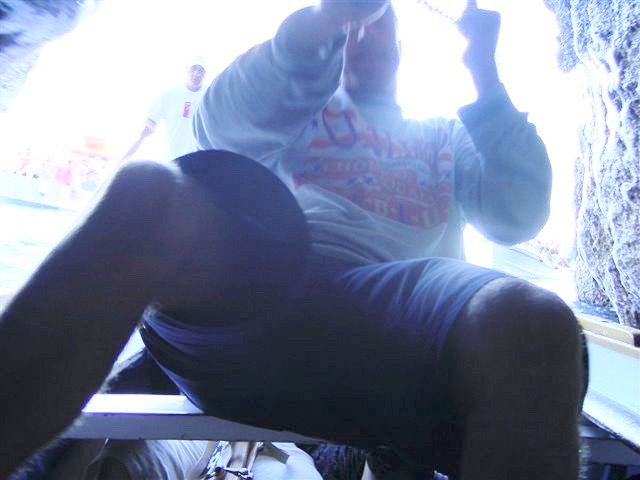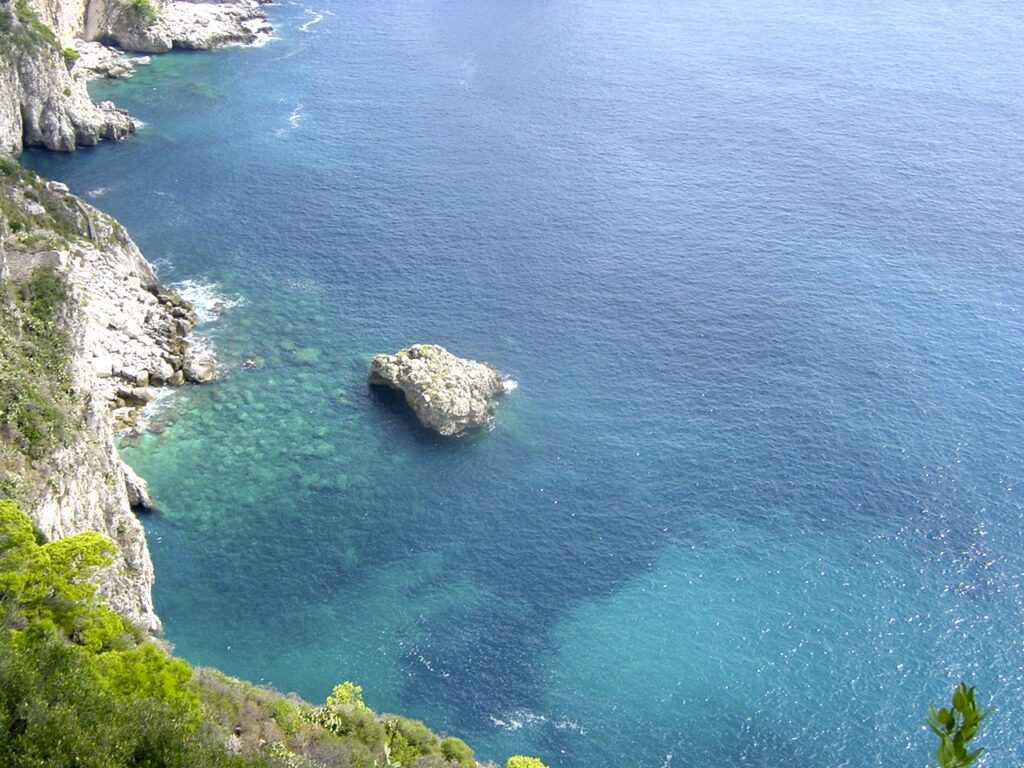The tour guide says it’s impossible, but I couldn’t give up the hope of a chance to see the Grotta Azzura.
We are on a cruise from Monte Carlo to Venice on the Regent Seven Seas Voyager. Today’s port of call is Sorrento, on the Amalfi Coast, where we’d visit the island of Capri, but not its symbolic Blue Grotto—the cruise line doesn’t offer the tour. Upset that we are not allowed to go on our own, we reluctantly opt for a tour to Anacapri, the town perched on Capri’s highest elevation.
The Blue Grotto has been famous for its underwater blue light, at least as far back as the 20th century AD, when Tiberius vacationed on Capri. He liked the spectacular setting on jagged rocks overlooking the blue hues of the Mediterranean Sea so much that it’s where he ran his Roman Empire. Some millennia later, it’s still one of Italy’s iconic tourist destinations.
A Change of Plan
We transfer from the cruise ship to Marina Grande—Capri’s main harbor. Signs to visit the Grotta Azzurra are hard to miss, and an opportunity too close to pass. We discuss this with our guide, but he holds his ground. The waiting time to enter the cavern is unpredictable, he says, and so is the weather, and it’s not part of the cruise line’s liability. The cruise ship will leave on time, with or without us. We—my husband, our friends, and a few fellow cruisers—understand this. We also guess what’s on each other’s mind.
We are weighing the risks of an independent tour until returning visitors convince us to go—although they admit not having to return to a cruise ship. Enters a motorboat owner who guarantees we’ll be back in less than two hours. Rebellion seems justified. Besides, we are not visiting Capri’s landmark during the crowded summertime, and the weather conditions are perfect—without the sun, there is no blue light in the cave. We apologize as we leave our frustrated tour guide on the pier.
The Blue Grotto and The Waves
The ten-minute boat ride along the coast gives me time to appreciate a vertiginous cornice, coiling about halfway up the precipitous cliff. I am pleased we aren’t on a bus en route to Anacapri. We then join other motorboats at a stop-and-wait spot. In the distance, the rowboats assembled by the cliff are the hint that it’s the entrance to the grotto, which appears much smaller than expected. After 20 minutes, we transfer onto a bobbing rowboat and our oarsman heads toward the end of the line for the passage.
The preparation of the boat ahead of us gets all my attention as the oarsman prepares for the leap. He looks back at the intermittent waves—entering the cave must be timed right. The hole is about one meter high and two meters wide. I grant the cruise line a point. The tour is a bit hazardous and somewhat unpredictable.
First, the oarsman must maintain the bow centered with the hole while staying at a distance and gauging the waves behind him. Then it all happens fast. The passengers swiftly lay down as he grabs a metal chain—affixed to the side of the hole—and simultaneously jerk-leaps the boat through the rocky mouth as he reclines, too. Then, oarsman, boat, and passengers disappear into the rocky mouth of the cliff. Soon after, another boat comes out with people flashing reassuring smiles. Our turn is next.
The oarsman reaching for the chain is our cue. Since we are five passengers instead of four, my husband sits at the bow yet manages to skid down while the three of us, behind the oarsman, collapse on each other like dominoes. I’d say it’s best to be with close friends. More than that, the oarsman joins our human pile, and the hilarious commotion takes all apprehension away.
Woosh! We are in.
Our boat glides through the silent darkness while my eyes adjust. I notice silhouetted boats, then the melodious sound of the oarsmen, turned singers, echoes in the cave. Stalactites descend from the natural dome above us, akin to the spires of an upside-down cathedral. Water drips on our faces.
Slowly, the boat turns around, and there it is. A light the color of lapis lazuli glows through the water. Similar to that of an under-lit pool, it’s like geological magic. A hole carved by erosion deep beneath the entrance combines the outgoing and incoming light from the cave opening. Divers know that the blue is due to the physics of seawater over light, and its property to alter colors—by removing 60 percent of the red, leaving tints and shades of turquoise, green, or lapis lazuli blue.
Moments later, we pass on the offer to take a dip. It’s time to go back; in the same sardine-packed-way as we did on the way in. Back on the motorboat, we notice people watching from the steps by the cave entrance, perhaps considering taking a plunge later. I wonder whether they know it’s forbidden, or that sea urchins stand guard.
We return to land with enough time for a stroll on Capri’s streets, lined with luxury boutiques, art galleries, and souvenir shops. Then, back on the ship, we celebrate our rogue day with Sorrento’s famous Limoncello.
- The blue light of the Grotta Azzurra (Capri.net)
- On the motorboat to the Blue Grotto (JRArnott)
- Close-up of the cornice to Anacapri (MCArnott)
- Opening to the Blue Grotto (JRArnott)
- Leaping into the Blue Grotto (JRArnott)
- The iconic three rocks of Capri (MCArnott)
First published 2012 Buckettriper.com

